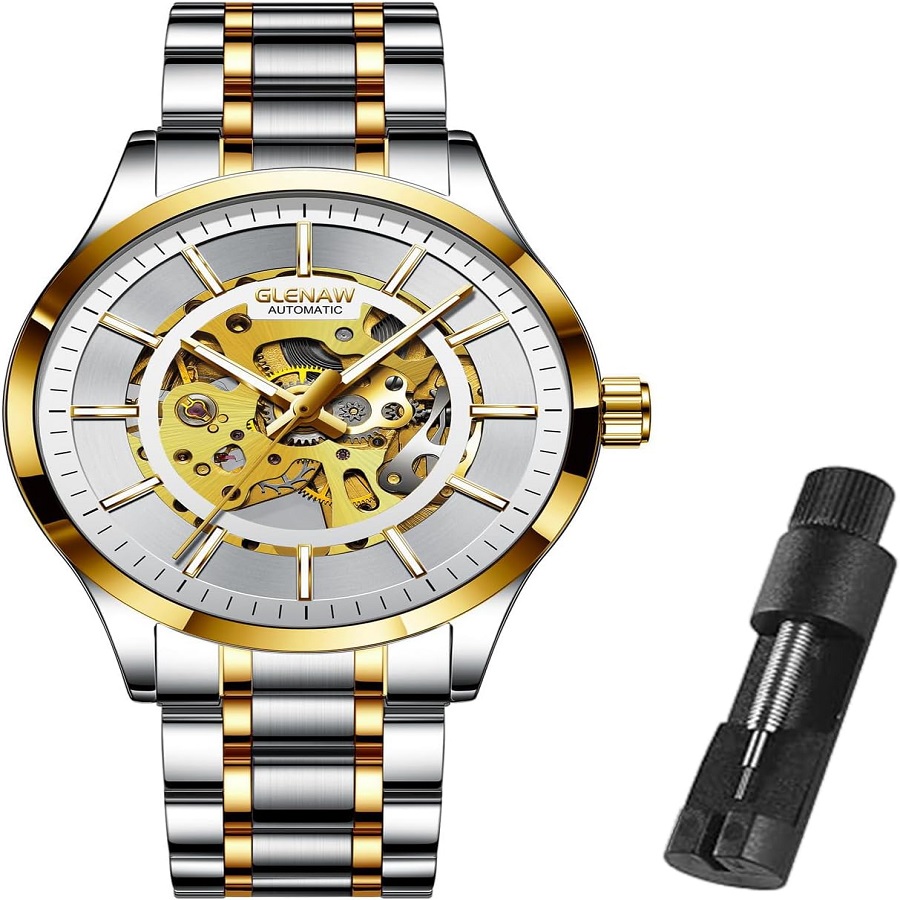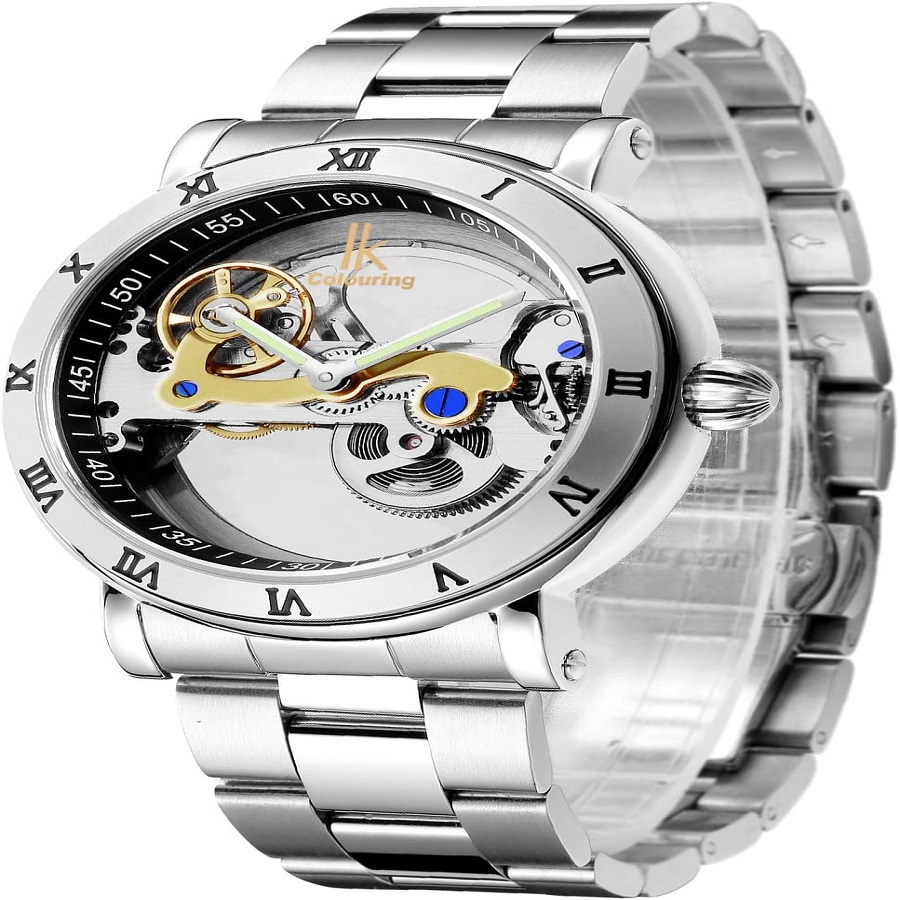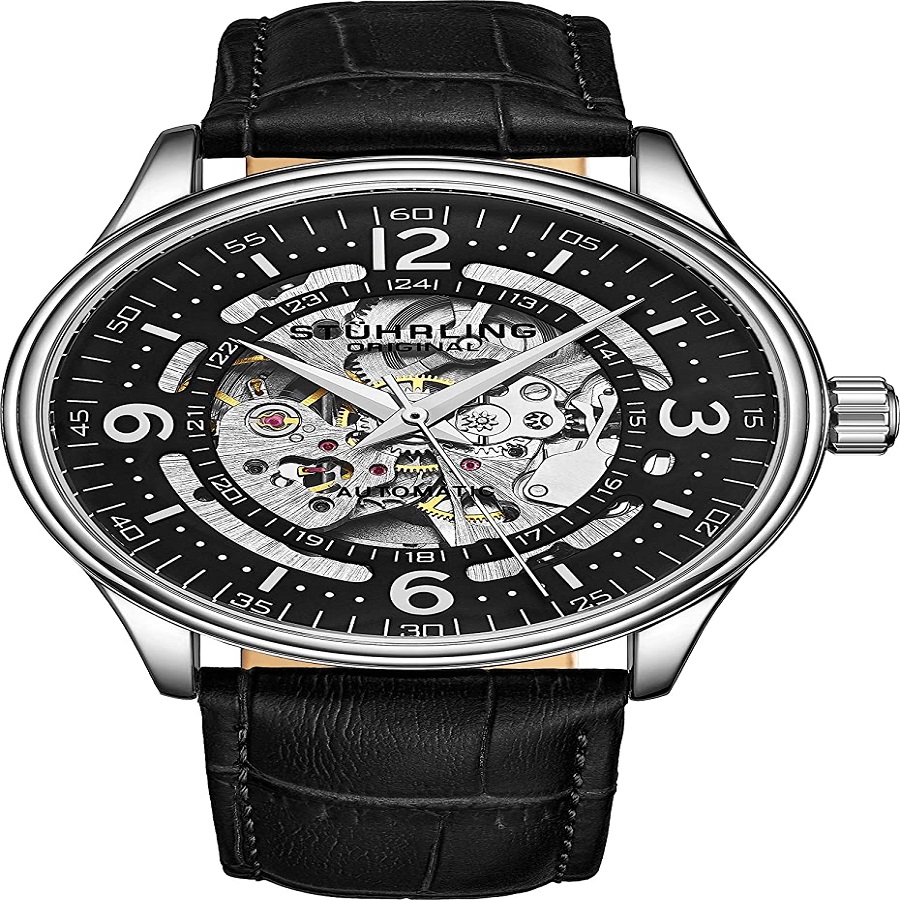Introduction
Winding Mechanical watch have captivated enthusiasts and casual wearers alike with their intricate craftsmanship, timeless design, and the unique charm of a mechanical movement. Understanding how to properly wind these watches—regardless of whether they are manual or automatic—can enhance their performance and longevity. In this guide, we will dive into the mechanisms behind mechanical watches, different winding techniques, and tips for ensuring they keep perfect time.
 Understanding Mechanical Watches
Understanding Mechanical Watches
At the heart of every mechanical watch is a complex system of gears, springs, and other components that work in harmony to keep time. Unlike quartz watches, which rely on batteries, mechanical watches are powered by the energy stored in a wound mainspring. This energy is released gradually to drive the movement of the watch hands.
There are two main types of mechanical watches: manual and automatic.
- Manual Mechanical Watches: These require the wearer to wind the mainspring regularly to keep the watch running. If not wound, a manual watch typically has a power reserve of around 40 to 48 hours, after which it will stop.
- Automatic Mechanical Watches: These watches are equipped with a rotor that moves as the wearer moves their wrist, winding the mainspring automatically. This means that regular wear can keep an automatic watch running without the need for manual winding, although they may also require periodic winding if not worn for a while.
Winding Techniques
Manual Winding
To maintain accuracy and longevity, manual winding is an essential practice for owners of manual mechanical watches.
- Locate the Crown: The crown is the small knob typically found on the side of the watch case. It is used to set the time and wind the watch.
- Unscrew (if applicable): Some watches have a screw-down crown that provides additional water resistance. If your watch has this feature, gently unscrew the crown until it pops out.
- Wind the Watch: Turn the crown clockwise. You will feel resistance as the mainspring tightens. Most watches will require about 20 to 30 full turns to adequately wind them. Be careful not to over-wind, as this could damage the mechanism. A gentle but firm winding motion is best.
- Set the Time: Once the watch is wound, you can pull the crown gently to the second position to set the time. Ensure you push the crown back in and screw it down if necessary to maintain water resistance.
Automatic Winding
Even though automatic watches can self-wind, they benefit from manual winding, especially if they haven’t been worn for an extended period.
- Initial Manual Winding: If the watch has stopped, or you want to give it a full wind when you start wearing it again, follow the manual winding steps outlined above. This helps ensure the mainspring is fully charged for accurate timekeeping.
- Wearing the Watch: Simply wearing an automatic watch regularly is often enough to keep it wound. The motion of your wrist causes the rotor inside the case to turn, winding the mainspring as you go about your daily activities.
- Winding Stations: For those who do not wear their automatic watches regularly, consider using a watch winder. This device mimics wrist motion and keeps the watch wound, ensuring it remains ready to wear.
Keeping Time Accurately
To ensure your mechanical watch keeps accurate time, consider the following tips:
- Know Its Power Reserve: Familiarize yourself with the power reserve of your specific watch. Regular winding will prevent it from stopping and losing accuracy.
- Regular Maintenance: Mechanical watches require periodic service to clean and oil the movement. Taking your watch to a certified watchmaker every three to five years can help maintain its accuracy.
- Avoid Magnetism: Mechanical watches can be affected by magnetic fields, which can disrupt their accuracy. Keep your watch away from magnets and electronic devices to avoid this issue.
- Positioning Matters: When storing your watch, consider its position. Some watches may run faster or slower when positioned horizontally versus vertically. Refer to your watch’s manual for recommendations on optimal storage positions.
- Avoid Temperature Extremes: Extreme temperatures can affect the lubricants inside your watch, impacting its accuracy. Store your watch in a controlled environment, away from heat sources and humidity.
The Mechanics Behind Winding
To further appreciate the significance of winding a mechanical watch, let’s explore the mechanics behind it.
- The Mainspring: The mainspring is the heart of a mechanical watch. It stores potential energy when wound and releases this energy gradually, regulating the timekeeping function. Proper winding ensures that the mainspring is fully charged, allowing for consistent timekeeping.
- Gear Train: The energy from the mainspring is transmitted through a series of gears known as the gear train. Each gear is calibrated to control the speed at which the time is displayed. Insufficient winding leads to a weaker power supply, causing the gears to operate sluggishly and potentially affecting accuracy.
- Escapement Mechanism: The escapement regulates the release of energy from the mainspring to the gear train. It’s a critical component that allows the watch to “tick” and keeps the seconds hand moving at a steady rate. Properly wound, the escapement will function optimally, maintaining consistent time.
- Balance Wheel: This part functions similarly to the pendulum in a clock. The balance wheel swings back and forth, maintaining the watch’s rhythm.
Exploring Different Types of Mechanical Watches
Mechanical watches come in various styles, each with unique winding requirements and characteristics. Understanding these can further enhance your experience.
- Dress Watches: Typically slim and elegant, dress watches often feature manual movements.
- Diver’s Watches: Built for durability and water resistance, diver’s watches often have automatic movements. While they can self-wind well when worn, they also require manual winding after being left unworn for an extended period. Their robustness makes them ideal for active individuals who enjoy water sports.
- Pilot Watches: Known for their large dials and visibility, pilot watches frequently use automatic movements.
- Sport and Adventure Watches: These watches are designed to withstand harsh conditions and may include features like altimeters or compasses. Depending on the model, they may be manual, automatic, or a combination of both.
Tips for Enhancing Your Mechanical Watch Experience
- Educate Yourself on Your Watch’s History: Many mechanical watches have rich histories. Research your model to learn about its craftsmanship, the brand’s heritage, and notable features. This knowledge can enhance your appreciation and connection to the watch.
- Join a Community: Consider joining forums and communities of watch enthusiasts. Sharing experiences, advice, and stories can deepen your engagement with your timepiece. You might also learn from others about effective winding techniques or maintenance tips that can help you keep your watch in prime condition.
- Explore Modifications: For those who enjoy tinkering, consider exploring customizations or modifications to your watch, like changing straps or adjusting the movement. However, always do this cautiously; consult a professional if you’re unsure about any alterations.
- Use Watch Accessories: Invest in proper watch boxes and winders.
- Take It to Professionals: Don’t hesitate to bring your watch to a certified watchmaker for evaluation. They can provide insights into the condition of your watch and suggest any necessary maintenance. Regular servicing can help catch issues early and prolong the life of your timepiece.
The Future of Mechanical Watches
Despite the ubiquity of digital and smartwatches, mechanical watches have maintained their allure. As technology continues to evolve, many watchmakers incorporate modern materials and techniques while preserving classic mechanics, ensuring that these watches remain relevant.
In a world driven by fast-paced technology, mechanical watches remind us of the beauty of craftsmanship, patience, and the art of timekeeping. Owning one is not just about having a mode of telling time; it’s about embracing a lifestyle that appreciates detail, tradition, and personal connection.
Conclusion
Understanding how to wind your mechanical watch—whether it’s manual or automatic—ensures that you get the most out of your timepiece. By mastering the winding techniques and incorporating regular maintenance into your routine, you can enjoy the precise craftsmanship of your mechanical watch for years to come. Embrace the art of horology and keep your timepiece ticking perfectly while appreciating the intricate mechanics that reflect a rich tradition of watchmaking. Whether you’re a seasoned collector or a newcomer to the world of mechanical watches, these practices will help you maintain your watch’s performance and ensure it remains a treasured accessory in your collection.

